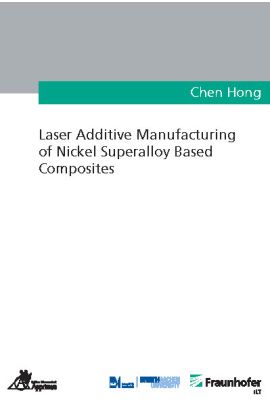In this thesis, LMD is applied to produce ultrafine TiC particle reinforced Inconel 625 composite parts. The effects of laser energy input per unit length (LEIPUL) on microstructure development, densification response, and mechanical performance including wear performance and tensile properties are comprehensively studied.
A relationship of processing conditions, microstructural characteristics, mechanical performance, and underlying strengthening mechanisms is proposed for a successful LMD of high-performance Inconel based composite parts. On increasing LEIPUL, the TiC reinforcing particles become significantly refined and smoothened via the elevated melting of particle surfaces and the dispersion state of ultra-fine reinforcing particles is homogenized due to the efficient action of Marangoni flow within the molten pool. The dendrites of Ni–Cr γ matrix undergo a successive change from an insufficiently developed, disordered microstructure to a refined, ordered microstructure with the increase of LEIPUL. The formation of the refined columnar dendrites of Ni–Cr γ matrix combined with the homogeneously distributed ultra-fine reinforcing particles contributed to the enhancement of wear performance of LMD-processed composites with a considerably low coefficient of friction (COF) of 0.30 and reduced wear rate of 1.3×10-4 mm3/Nm. The optimally prepared TiC/Inconel 625 composite parts demonstrate a ductile fracture mode with a sufficiently high tensile strength of 1077.3 MPa, yield strength of 659.3 MPa, and elongation of 20.7 %. The superior tensile properties of LMD-processed parts are attributed to the significant grain refinement effect of the matrix during laser processing and the efficient prohibition of ultrafine reinforcing particles on the mobility of dislocations.
The high-temperature oxidation performance of the LMD-processed parts and the underlying physical/chemical mechanisms are systematically studied. The LMD-processed TiC/Inconel 625 composites exhibit superior oxidation resistance at the oxidation temperature of 800 °C. A further increase of the oxidation temperature to 1000 °C causes severe oxidation attack on the composites, due to the unfavorable further oxidation of Cr2O3 to CrO3 at the elevated treatment temperatures.
| Autor | Hong, Chen |
|---|---|
| Lieferzeit | 3-4 Tage |
| Gewicht | 0.206 kg |
| Erscheinungsdatum | 13.08.2020 |
Fraunhofer-Institut für Lasertechnik (ILT)
Laser Additive Manufacturing of Nickel Superalloy Based Composites
Kurzbeschreibung
In this thesis, LMD is applied to produce ultrafine TiC particle reinforced Inconel 625 composite parts. The effects of laser energy input per unit length (LEIPUL) on microstructure development, densification response, and mechanical performance including wear performance and tensile properties are comprehensively studied.

